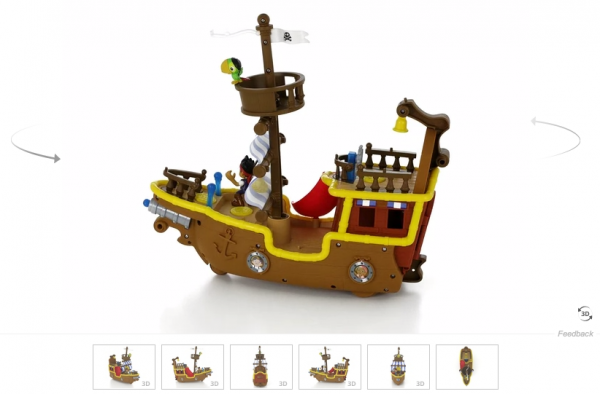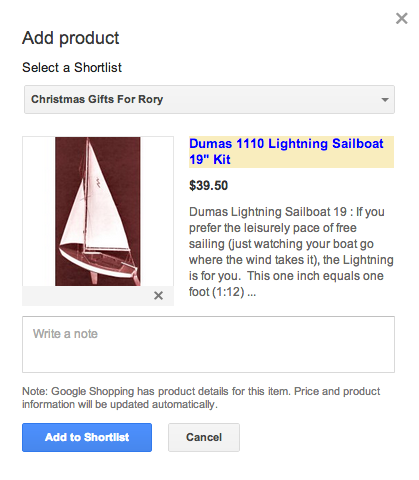“Shortlists,” 360 Degree Product Views, And Promotions Added To Google Shopping
As consumers prepare to get serious about their holiday shopping, Google is introducing new features to its pay-for-play Shopping search engine, including 360 degree product images, deals and discounts, and a collaborative shopping list. 360 Degree Views Start With Toys The company has started its effort to get 360 degree images of products with the […]
As consumers prepare to get serious about their holiday shopping, Google is introducing new features to its pay-for-play Shopping search engine, including 360 degree product images, deals and discounts, and a collaborative shopping list.
360 Degree Views Start With Toys

The company has started its effort to get 360 degree images of products with the toy category — a natural for the holiday season. Google VP of Product Management Sameer Samat told me the company’s priority is on products that consumers like to examine closely and feel in the retail environment — such as apparel, shoes and handbags, for example. As this feature began to appear in results, the images were quite slow to load (at least on my system), but, once loaded, the images were easy to manipulate.
Rather than taking product images from merchants or manufacturers, the company has been procuring the products itself, or asking manufacturers to send samples. Then, Google staffers have been photographing them using proprietary technology that allows users to manipulate the image and see all sides of it. Though Samat said the company is open to working with manufacturers that already have such images of their products, for now he expects most of the image production to be done in-house. Google is currently collecting information from manufacturers interested in showing their products in 360 degrees.
“Shortlists” For Collaborative Shopping
Additionally, Google is launching “Shortlists” — an application for compiling lists of products and collaborating on them with friends. Users can add products via Google Shopping or input any product page URL from across the web.

“We’re really excited about the capability here, because on Google we see a lot of people trying to research… as we study this, they use email or they use a blank document or sticky notes, which aren’t always the most convenient,” said Samat.
This isn’t the first time, by any stretch, that a company has launched a collaborative shopping list application — Amazon’s Wish Lists, for example, allows users to collect products from across the Web. But Google — as a third party and not a merchant itself — is probably well-positioned to make such a thing successful, especially if it’s integrated into other experiences like Gmail and Google+.
Discounts And Promotions Directly On Shopping SERPs
Finally, Google Shopping has begun showing discounts or promotions on products on search results pages — helping a merchant’s products stand out.
So far this is a test with just a few merchants, but the company is actively recruiting retailers to sign up to participate.
These discounts and promotions are also part of the third version of the Google Shopper mobile app, released last week. Retailers can list promotions for their online stores, but also for their brick-and-mortar locations — and mobile consumers can see discounts and promotions in stores that are physically nearby.
Related stories
New on Search Engine Land

